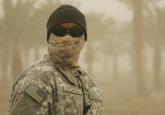Original Research
Venous Thromboembolism Prophylaxis in Acutely Ill Veterans With Respiratory Disease
This observational study assessed the rate and appropriateness of pharmacologic venous thromboembolism prophylaxis in veterans with pulmonary...
Dr. Krefft is a resident, Dr. Nawaz is an associate professor, and Dr. Miller is a professor of medicine, all at the University of Colorado Anschutz Medical Campus in Aurora. Dr. Rose is also an associate professor at the University of Colorado in Denver. Dr. Miller and Dr. Nawaz are also physicians at the VA Eastern Colorado Health Care System in Denver.
In 1955, Doll published an analysis associating asbestos exposure with risk for lung cancer. 9 Many naval veterans and shipyard workers had asbestos exposure, resulting in a spectrum of asbestos-related diseases, including bronchogenic cancer. 10
Depleted uranium was used in munitions during the first Gulf War and more recently during military operations in SWA as a part of Operation New Dawn (OND), Operation Iraqi Freedom (OIF), and Operation Enduring Freedom (OEF). Because of concerns of military personnel having complex exposure to depleted uranium, including via inhalation, the VA established the Depleted Uranium Surveillance Program, which has followed a cohort of service members exposed to inhaled depleted uranium during friendly fire in 1991. No significant differences between individuals with high urinary uranium levels and low urinary uranium levels were found in self-reported respiratory symptoms and pulmonary function testing (PFT). Additionally, 20 years after exposure to depleted uranium, there was no statistically significant difference of low-dose chest computed tomography (CT) evidence of lung cancer in these 2 groups. 11
Mustard gas is considered a definite lung carcinogen. 12,13 Both long-term, low-dose and short-term, high- intensity exposures are known to cause human lung cancer. 14 Mustard gas was first widely used in warfare in World War I. Mustard gas was used in training for World War II; training accidents resulted in acute toxicity even in lower exposures. It was later used as a chemical warfare agent in the Iran-Iraq conflict in the late 1980s and early 1990s. It is estimated that about 4,000 U.S. service members have been acutely exposed to high concentrations of mustard gas. Sulfur mustard may be incorporated into improvised explosive devices, and there is concern that troops in Iraq have been exposed to this agent in sites previously used for manufacturing and storage. 15
The herbicide Agent Orange is commonly contaminated with dioxin, which has been demonstrated to be a tumor promoter in animal studies. Agent Orange was used widely in the Vietnam War. The National Academy of Sciences issued a report in 2001 reviewing evidence for a link between Agent Orange and various neoplasms. Evidence was strongest for Hodgkin lymphoma and soft tissue sarcoma. The evidence of an association between Agent Orange exposure and lung cancer was deemed only suggestive. 16
Over the past 14 years, > 2.5 million U.S. military personnel and civilian contractors have been deployed as part of 3 major military operations: OEF in Afghanistan (2001 to present), OIF in Iraq (2003 to 2010), and OND in Iraq (2010 to present). 17,18 Deployed personnel encounter a wide variety of inhalational exposures that include desert dust particulate matter, burn pit combustion products, environmental tobacco smoke, vehicular diesel exhaust, debris from detonations and explosions, and other unique or specific job-related exposures (Table 1). 19,20
A number of recent studies have helped identify and characterize an emerging spectrum of deployment-related lung disorders, including asthma, rhinosinusitis, emphysema, bronchiolitis, granulomatous pneumonitis, and less common conditions such as acute eosinophilic pneumonia and rapidly progressive pulmonary fibrosis (Table 2). 20-30 Still, diagnosis of these conditions is often challenging, and traditional diagnostic tools such as PFT and chest radiography may be normal or mildly abnormal despite significant histopathologic abnormalities on surgical lung biopsy. 24,30,31
This observational study assessed the rate and appropriateness of pharmacologic venous thromboembolism prophylaxis in veterans with pulmonary...

Federal health care providers need to be vigilant to this new coronavirus from the Arabian Peninsula, not only to properly treat patients, but...
Acute eosinophilic pneumonia is an uncommon but potentially life-threatening cause of respiratory failure if left untreated.
